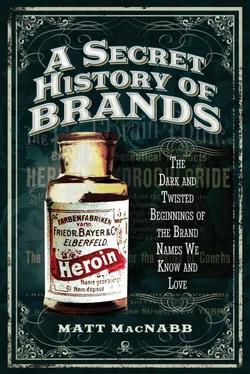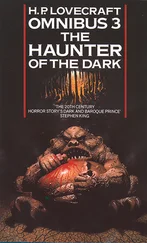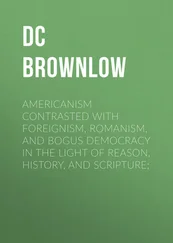The Nazi party had clearly laid out their intentions in their original twenty-five-point ideology over two decades before Chanel would get involved with the party. The intention of full segregation of Jews from their Aryan society was well underway in 1941, and had been since the Nuremberg Laws were passed in 1935. It took less than a year for two thirds of all Jewish-owned businesses in Germany to be transferred to non-Jewish Germans at a price that was well below the market value. Also, all Jewish managers and employees were fired. The ability for anyone of Jewish descent to make a living was effectively removed from Germany – and for any region that the Nazis would conquer. This would eventually include France.
When France fell in May and June of 1940, it was an enormous blow to the collective psyche of the European people who still had hope of resisting the dark shadow being cast by Hitler. The imagery of Hitler and the Nazis rolling into Paris and gleefully enjoying the sights, like the Eiffel Tower, are still to this day a vivid and haunting snapshot into what could have easily been the fate of the rest of Europe, and perhaps the world. Once France had fallen to the Nazis, it took Chanel only a year to devise a plan that would live in infamy.
On 5 May 1941 Coco Chanel wrote the following in a letter to the Nazi party, stating her case for the return of Parfums Chanel to her full ownership:
Parfums Chanel is still the property of Jews… and has been legally ‘abandoned’ by the owners. I have an indisputable right of priority. The profits that I have received from my creations since the foundation of this business… are disproportionate.
There is little doubt that the plan would have worked just the way she had wanted, but Chanel hadn’t accounted for the planning and cunning of the wealthy. It turned out that the Jewish man who owned that controlling stake in Parfums Chanel, Pierre Wertheimer, had foreseen the Nazi movement across Europe and had fled to New York to avoid the inevitable persecution. It was his actions prior to fleeing that Chanel did not anticipate. Wertheimer transferred the ownership of Parfums Chanel over to Felix Amiot before he left. Amiot was a French businessman without a drop of Jewish blood in his family line. This move is likely all that kept the company out of the clutches of Chanel during the war. Amiot turned the company back over to Wertheimer’s control once the war was over.
The 1924 contract to gain Parfums Chanel was again an issue when Coco had the nerve to bring the case up again, this time post-war in a court of law.
The Nazi Mistress
When Adolf Hitler became the German Chancellor in 1933, the rise to power for the Nazi leader was soon in full swing and he would soon make a carefully crafted move to full dictatorship. The regime of the Third Reich involved many branches, from the Luftwaffe (German Air Force) to the Schutzstaffel (SS) and the German secret police, Geheime Staatspolizei (Gestapo). These were the well-known divisions of the Nazis, but there were several departments, including a propaganda wing called Public Enlightenment and Propaganda, and the Abwehr. The Abwehr was a secret German military intelligence organisation that had been established in 1920. In the post-First World War era, Germany wasn’t allowed to engage in any espionage, thanks to the Treaty of Versailles, an agreement that would also levy harsh restrictions on the country.
When Hitler took power he gained control of the Abwehr and in 1938 he organised the branch into a more effective intelligence-gathering unit. It was Joseph Goebbels himself, the Reich Minister for Public Enlightenment and Propaganda, who would appoint Abwehr spy Baron Hans Gunther von Dincklage to the position of ‘special attaché’ to the German Embassy in Paris in 1933. The position that Dincklage held should not be underestimated. His German Embassy position provided him with the extremely convenient and effective veil of diplomatic immunity to work and plot while in France. His actions didn’t fall beneath the notice of the French intelligence community. Records reveal that they had been watching Dincklage since 1919. The French knew full well that he was a German Abwehr agent and even that his agent identification code was F-8680.
Once Dincklage got his attaché position he was able to move into a wealthy area of Paris and could be seen sporting around town in his flashy grey Chrysler roadster. Even his live-in maid, Lucie Braun, was a Nazi agent. The primary purpose of having the Baron as the attaché was to allow him the ability to gather intelligence effectively by planting employees in various key places, like factories and various government agencies. In 1934 the Abwehr agents were directed by the Nazi hierarchy to work more closely with the Gestapo to organise and execute espionage. It was, in fact, the very first Nazi cell in France.
Chanel had moved to a gorgeous suite in the famed Hotel Ritz, Paris. The high ceilings and ornate but elegant style made it the place to be if you had means. To this day, the Ritz has a famed reputation for its lavish atmosphere and unique culinary experience. Cesar Ritz opened the hotel bearing his name right on the place Vendome, a square that sits at the start of the Rue de la Paix, a fashionable shopping district. Ritz promised that his hotel would offer ‘all the refinements that a Prince might hope to find in his own private residence’. It’s said that his own investors complimented Cesar on his hotel at the opening, proclaiming: ‘Kings and Princes will be envious of you, Ritz. You’re going to teach the world how one should live.’ The move to the Ritz was no small hallmark in the life of Chanel, a woman who came from meagre beginnings. Her apartment there was, literally, the lap of luxury and high society.
During this time she was seeing designer Paul Iribe, who worked with Vogue magazine doing illustrations and design. The relationship between Iribe and Chanel started in 1931. Iribe, like all good artists, had his muse. The two would collaborate on a provocative magazine, titled Le Témoin , Iribe as illustrator and Chanel as financier. Le Témoin was well known as a purveyor of anti-Semitism and aggressive nationalism. The heroine of the illustrations within was Marianne, a symbol of French liberty. Iribe clearly modelled Marianne after Chanel herself. Chanel was deeply in love with Iribe and the two looked likely to wed, but in 1935, during a rousing game of tennis, Iribe collapsed and died in front of Chanel. She was devastated by the loss. Chanel mourned, but continued to move forward with her work, unaware that the world was about to be plunged into war.
Chanel and the French authorities were well aware of Dincklage’s Nazi connections and his work as an agent of espionage. During the prewar era his dealings were revealed by French counter-intelligence agents and were published in the newspaper Vendémiaire . There was no denying knowledge of his exploits, so when Chanel embarked upon a relationship with the Baron, she knew full well who she was getting into bed with. The moment that Coco and Hans met is not known; Coco would tell officials after the war that she had known him for decades, while others place their meeting sometime in the 1930s. Regardless of the truth, by the time the Nazis had taken France, the Hotel Ritz where Chanel resided had become a reserved place for senior Nazi officials. Chanel was one of the few foreigners who was allowed to remain.
Paris had fallen and refugees had fled to the South. There was Nazi propaganda at every street corner, signs and posters served as an ominous reminder to citizens that obedience to the new occupying forces would be in their best interest. Chanel was 57 when she and Dincklage became lovers in 1940. Hans was a cultured, pleasant and handsome man and a great conquest for Chanel in the newly occupied Paris. It was Dincklage who would facilitate all of the Nazi dealings that Chanel would have during the war. It is assumed that it must have been her connection with Dincklage that allowed Chanel to remain at the Ritz, where only a chosen few non-Germans were permitted to remain in residence. Only a handful of known Nazi collaborators and the wife of the hotel founder were allowed to stay, along with Coco Chanel. The times would soon become hard for French citizens, with many families facing starvation. All the while, the German officials, including Dincklage and Chanel, would dine lavishly in the well-guarded confines of the Ritz. In much the same way that the eight-man band continued to play their cheerful songs for the aristocracy while the RMS Titanic sunk around them, the high society of Paris continued on their typical merry way, while Europe came crashing down under the pressures of wartime.
Читать дальше












